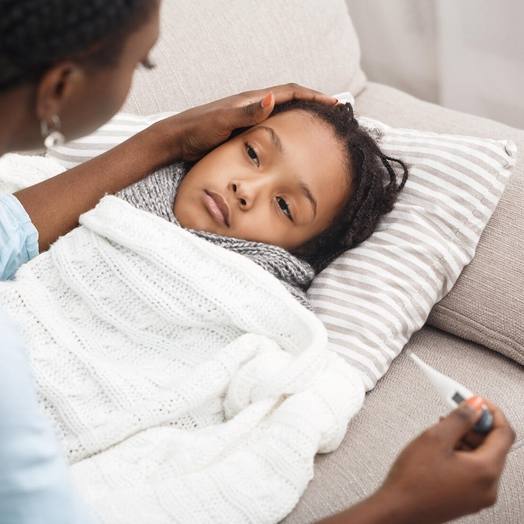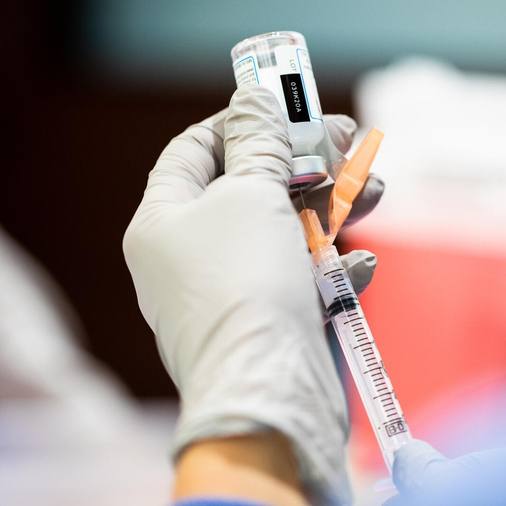
Find out when to get emergency care for non-COVID-19 symptoms and COVID-19 symptoms, and learn what emergency rooms are doing to keep you safe during the COVID-19 (coronavirus) pandemic.
News about the COVID-19 (coronavirus disease 2019) pandemic may be making you feel anxious about going to the emergency department or getting medical care, and you may wonder if it's safe to go to the hospital.
Current data has found that nearly 30% of people are avoiding or delaying medical care due to COVID-19 concerns. Some emergency rooms have about half their usual number of patients. But it's important to seek emergency care if you have serious non-COVID-19 symptoms and COVID-19 symptoms.
Delaying care for a medical emergency, such as a heart attack or stroke, can be life-threatening or lead to serious complications. Find out when you should go to the emergency room, and learn what emergency depatremnts are doing to keep you safe from getting the COVID-19 virus.
How are emergency rooms keeping people safe?
You may be worried about your chances of catching the COVID-19 virus in the emergency department or in the hospital if you need to be admitted. Data has found that 80% of adults are concerned about catching the COVID-19 virus in the emergency room. However, emergency rooms and hospitals are taking precautions to prevent the spread of the COVID-19 virus and help make sure that visits to the hospital are as safe as possible.
Emergency rooms and hospitals follow strict guidelines for protecting people during the COVID-19 pandemic, including:
- Universal masking. Emergency rooms require that everyone wear a face mask. Health care professionals are required to wear personal protective equipment (PPE).
- Screening at all entrances. Everyone entering is screened for COVID-19 signs and symptoms.
- Separate waiting areas for people who have or may have COVID-19. People who may have COVID-19 may be asked to wait in separate, designated areas of the emergency deparment away from those who don't have COVID-19 signs and symptoms.
- Frequent cleaning and disinfecting. Waiting areas, rooms, restrooms and surfaces are cleaned and disinfected often to accommodate updated COVID-19 hospital cleaning protocols.
- Social distancing. Check-in and waiting areas are arranged for social distancing.
What can you do to protect yourself in the emergency room?
Protect yourself in the emergency room as you would in any public place:
- Wear a cloth face mask.
- Avoid touching your eyes, nose or mouth.
- Keep a social distance of 6 feet (2 meters) from other people.
- Clean your hands often, especially after touching any surfaces. Wash your hands with soap and water for 20 seconds, or use an alcohol-based hand sanitizer that contains at least 60% alcohol.
What symptoms require emergency attention?
If you have any of these signs or symptoms, go to the emergency room or call 911 or your local emergency number:
- Heart attack signs and symptoms, including chest pain or pressure; pain in one or both arms, stomach, back, or jaw; shortness of breath; or nausea or lightheadedness.
- Stroke signs and symptoms, such as a drooping face, arm weakness or slurred speech. Other signs and symptoms can include sudden numbness, confusion, vision difficulties, difficulty walking or sudden headache.
- Fainting, dizziness or weakness.
- Head or spine injury.
- Injury from a car or motorcycle accident.
- Sudden or severe pain.
- Bleeding that you can't stop.
- Severe or long-lasting vomiting or diarrhea.
This list doesn't include all symptoms that may require emergency attention. If you have any serious symptoms requiring emergency care, go to the emergency room or call your local emergency number or 911. Don't wait to get care.
What COVID-19 symptoms require emergency care?
Seek care immediately if you have or may have COVID-19 and experience any of these emergency signs or symptoms:
- Trouble breathing
- Persistent chest pain or pressure
- Inability to stay awake
- New confusion
- Blue lips or face
Alert the emergency room that you have or may have COVID-19 before going in. If you're being transported in an ambulance, tell the medics. This will give the emergency room staff time to prepare and use infection control practices and wear PPE. The emergency department staff may also give you specific instructions to follow when you arrive, such as wearing a cloth face mask and waiting in a separate area of the emergency room.
In the emergency room, medical personnel will evaluate your symptoms, and they may perform blood tests and X-rays. They'll determine whether to test you for the COVID-19 virus. If your condition is serious, you may be admitted to the hospital. If admitted, you'll be placed in a single-person room. Medical staff will wear personal protective equipment, including masks and eye protection, when caring for you.
Not sure if you need to go the emergency room?
If you're not sure if you should get emergency care, call your health care provider or medical team for advice. If it's outside of business hours, you may be able to ask for the on-call doctor. If your hospital or employer has a nurse triage line, call this number to discuss your symptoms. You might be able to have a virtual visit or phone call, go to an urgent care or express care clinic, or delay going to your health care provider.
This article is written by Mayo Clinic Staff. Find more health and medical information on mayoclinic.org.
Related article:
Health care leaders urge patients to seek necessary care
In a New York Times Opinion piece, Gianrico Farrugia, M.D., Mayo Clinic's president and CEO, and Tomislav Mihaljevic, M.D., chief executive and president of the Cleveland Clinic, join forces to send a clear message: patients should not delay needed care or screenings, or the toll of COVID-19 will be much greater.
To prevent further harm, people with serious, complex and acute illnesses must now return to the doctor for care.
Gianrico Farrugia, M.D., and Tomislav Mihaljevic, M.D.
Information in this post was accurate at the time of its posting. Due to the fluid nature of the COVID-19 pandemic, scientific understanding along with guidelines and recommendations may have changed since the original publication date.
Check the Centers for Disease Control and Prevention website for additional updates on COVID-19. For more information and all your COVID-19 coverage, go to the Mayo Clinic News Network and mayoclinic.org.







